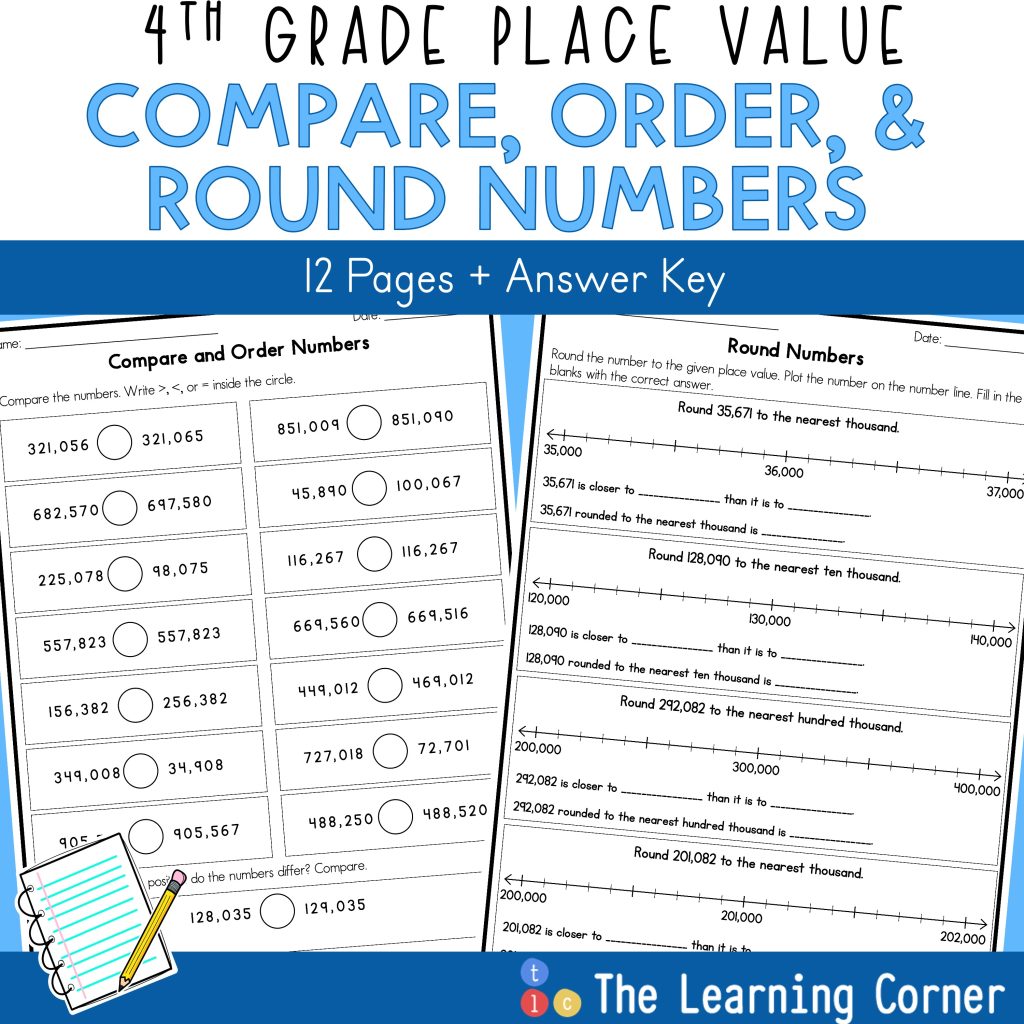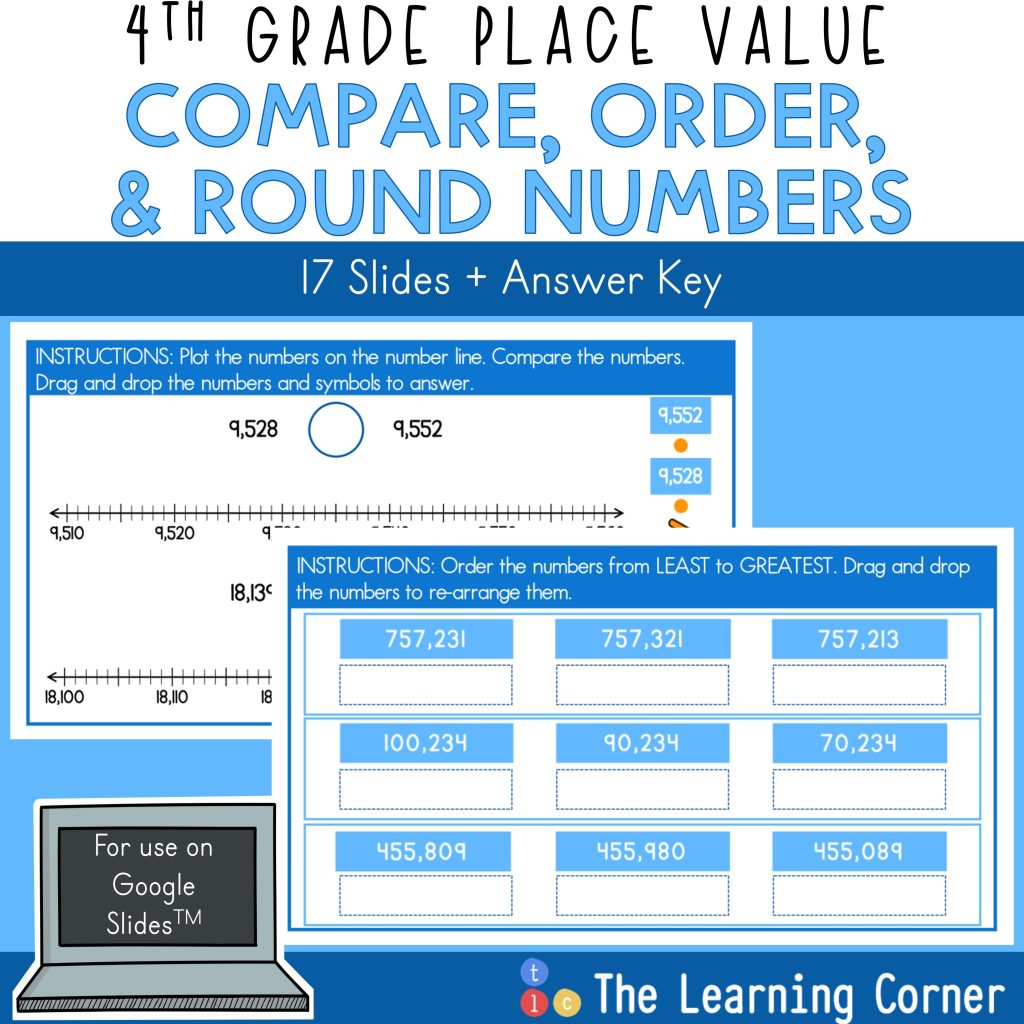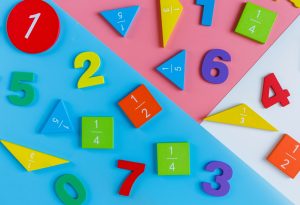To compare numbers, you need to know the relationships between numbers. This blog post will walk you through the various strategies that will help you compare numbers. Let’s jump in!
Symbols Used to Compare Numbers
First, we have to understand that there are three symbols that we use when comparing numbers. We have greater than, less than, or equal to.
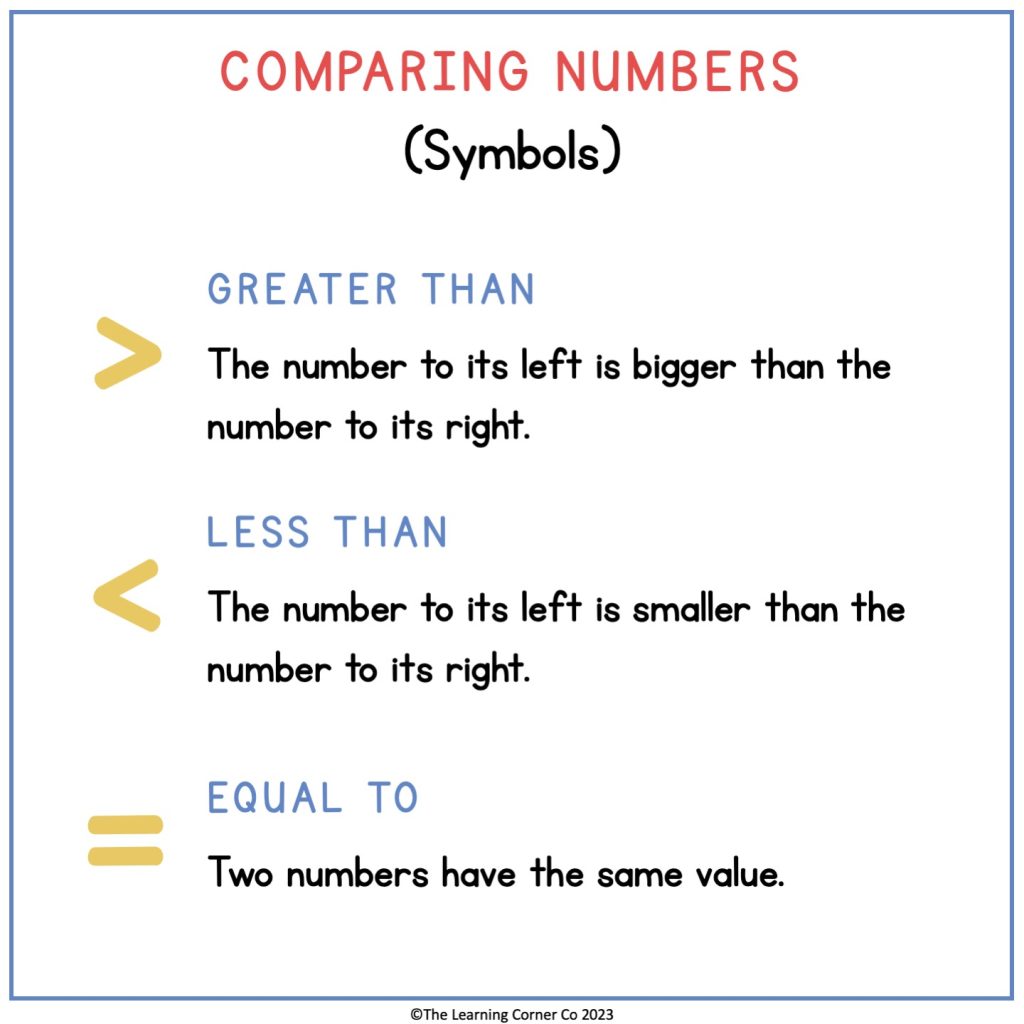
- Greater than (>). The greater than symbol is used when a number to the left of the symbol is bigger than the number to is right. An example is 10>5. 10 is greater than 5.
- Less than (<). The less than symbol is used when a number to the left of the symbol is smaller than the number to its right. An example is 5<10. 5 is less than 10.
- Equal to (=). The equal sign is used to show that two numbers have the same value. An example is 10 = 10. 10 is equal to 10.
Less than sign and greater than sign may be confusing to use. Just look at them as if they are the mouths of alligators! Alligators will ALWAYS eat the bigger number!
Use Benchmark Numbers to Compare
Benchmark numbers are reference points. These numbers will help you quickly identify which number is larger or smaller.
Benchmarks can be numbers that skip count by 5s, 10s, 100s, 1000s, or even more! The benchmarks that you use will depend on the numbers that you are comparing.
To compare numbers using benchmarks:
- Place the numbers on a number line.
- Use a benchmark for each given number.
- Compare the benchmarks.
Let’s try it! Compare 58 and 79. Since the numbers are between 0 and 100, let’s use multiples of 10 as our benchmark.
First thing you need to do when using benchmarks to compare is to place the numbers on a number line.
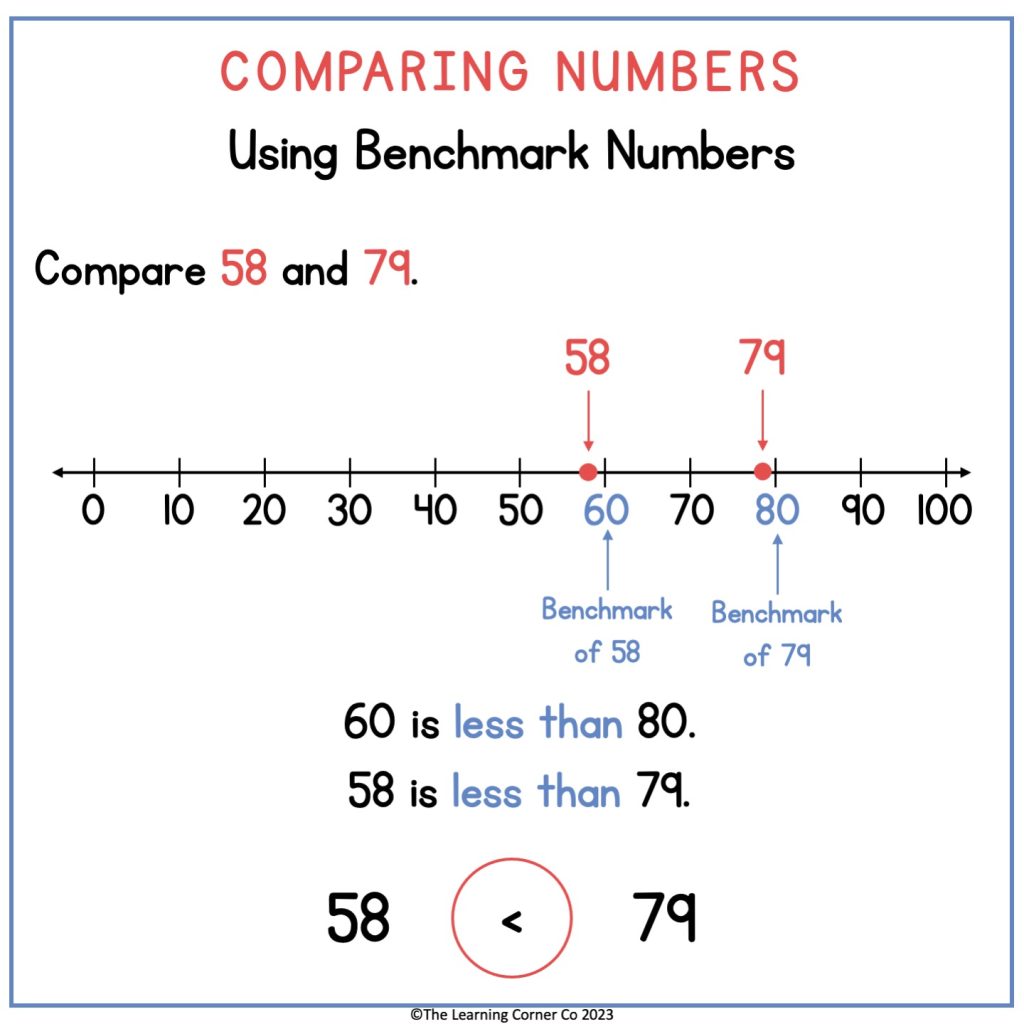
Since 58 is close to 60, use 60 as a benchmark number. Since 79 is close to 80, use 80 as a benchmark number. Compare the benchmark numbers. 60 is less than 80. Since 60 is less than 80, 58 is less than 79.
Use a Number Line
When comparing numbers, number lines are your best tool! Using a number line would easily help you which number is bigger or smaller.
Do you need help making number lines on Microsoft PowerPoint? Check out my blog post here!
To compare numbers using a number line:
- Draw a number line with equal-sized intervals.
- Place the numbers you need to compare on the number line.
- Compare where each number is placed. If a number is further to the right of a number line, that number is bigger. If a number is further to the left of a number line, that number is smaller.
Let’s try! Compare 84 and 42. Since the numbers are between 0 and 100, let’s use a number line from 0 to 100 and intervals of 10s.
Now, place the given numbers on the number line. Notice how further to the right 84 is compared to 42. This means that 84 is greater than 42.
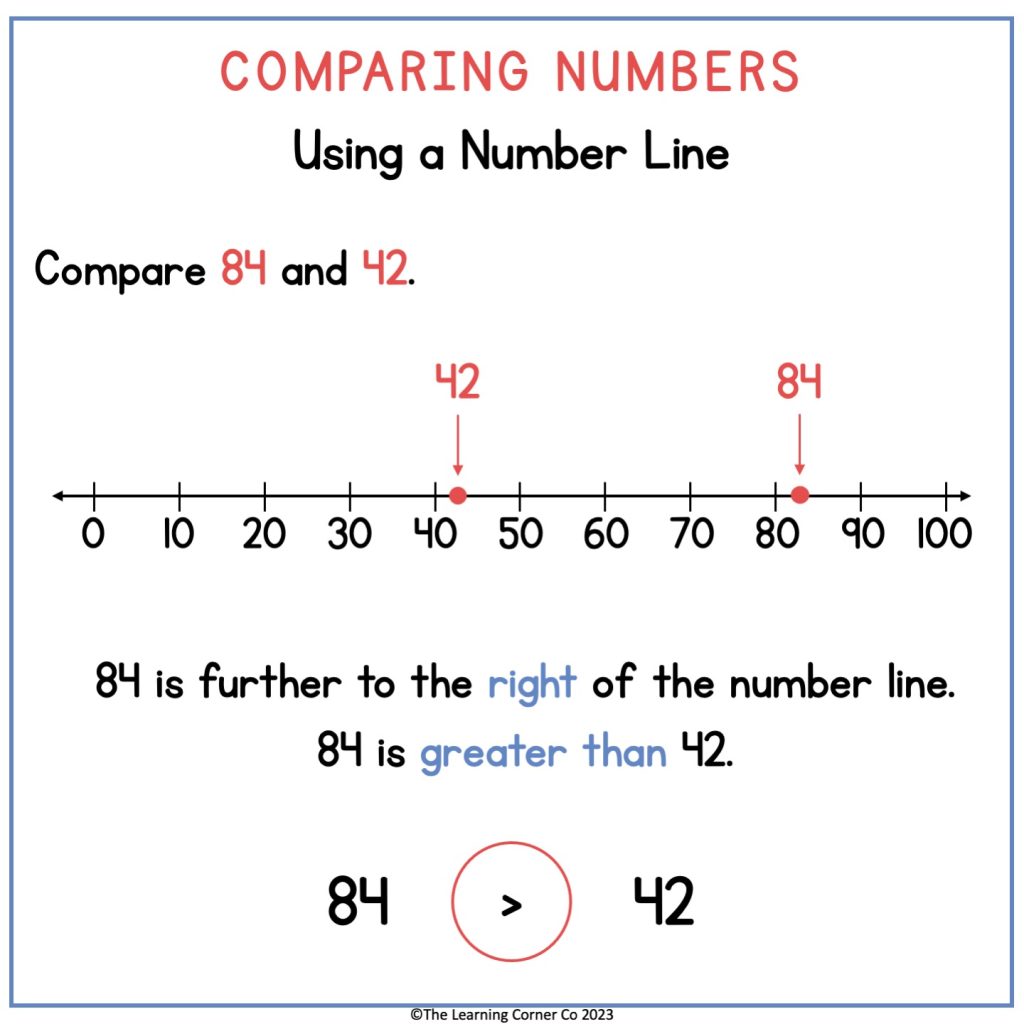
Use a Place Value Chart to Compare
Place value charts are important when comparing numbers. This helps you understand the relationship among the numbers.
To compare numbers by using a place value chart:
- Write the numbers in a place value chart.
- Starting with the greatest place value, compare the digits on the chart.
- If the digits are the same, compare the digits in the next place value to the right. Keep on moving to the next place value until you find digits that are different.
Let’s compare 282 and 289. First, decompose each number based on place value (hundreds, tens, and ones).
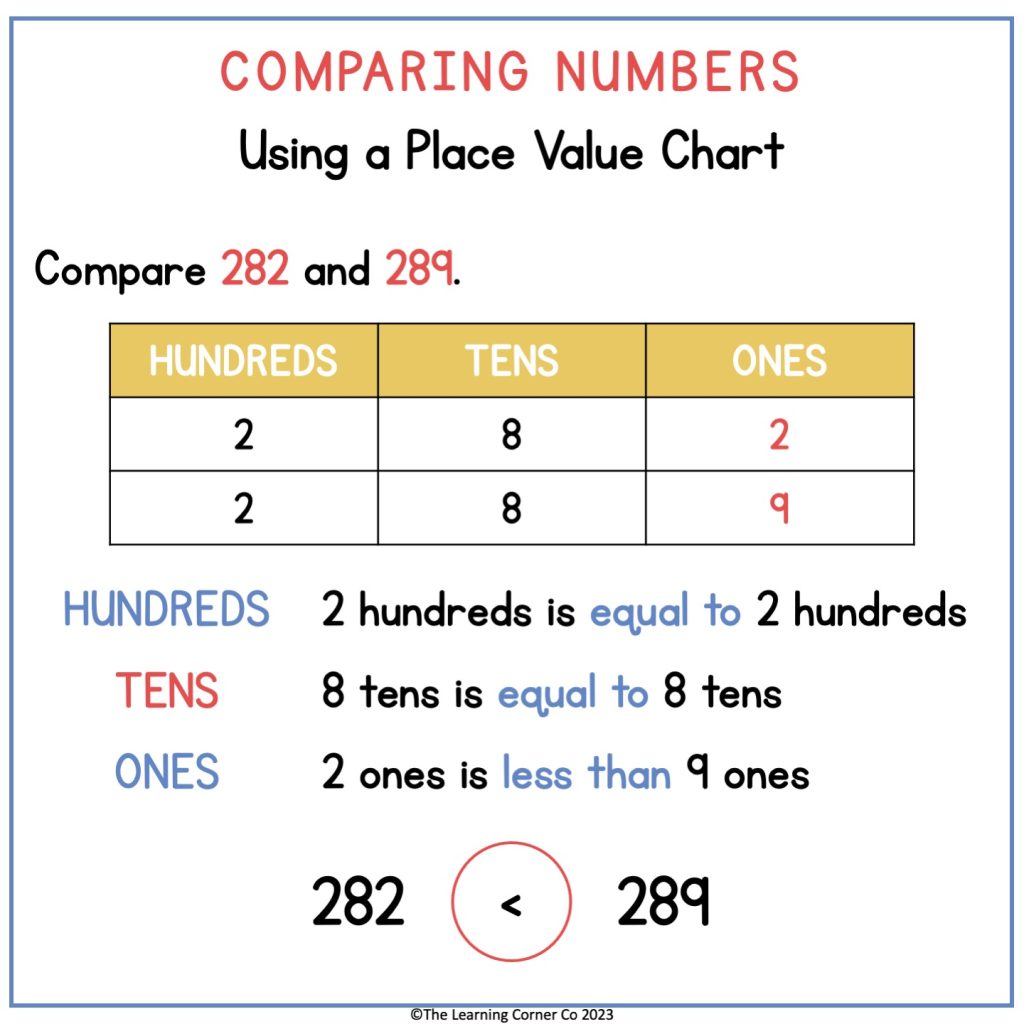
Then, compare the digits in the hundreds place. Both numbers have the digit 2 in the hundreds place.
Now, move to the right and compare the digits in the tens place. Both numbers have the digit 8 in the tens place.
Lastly, move to the right and compare the digits in the ones place. The ones digit in 282 is 1. The ones digits in 289 is 9. 1 is less than 9. So, 282 is less than 289.
Now, you’re ready to compare numbers! Use these two strategies and be keen to detail to further help you master the skill.
Practice comparing numbers with these compare numbers worksheets and digital resources!
Are you looking to compare fractions? Click here to check out my blog post on comparing fractions!


